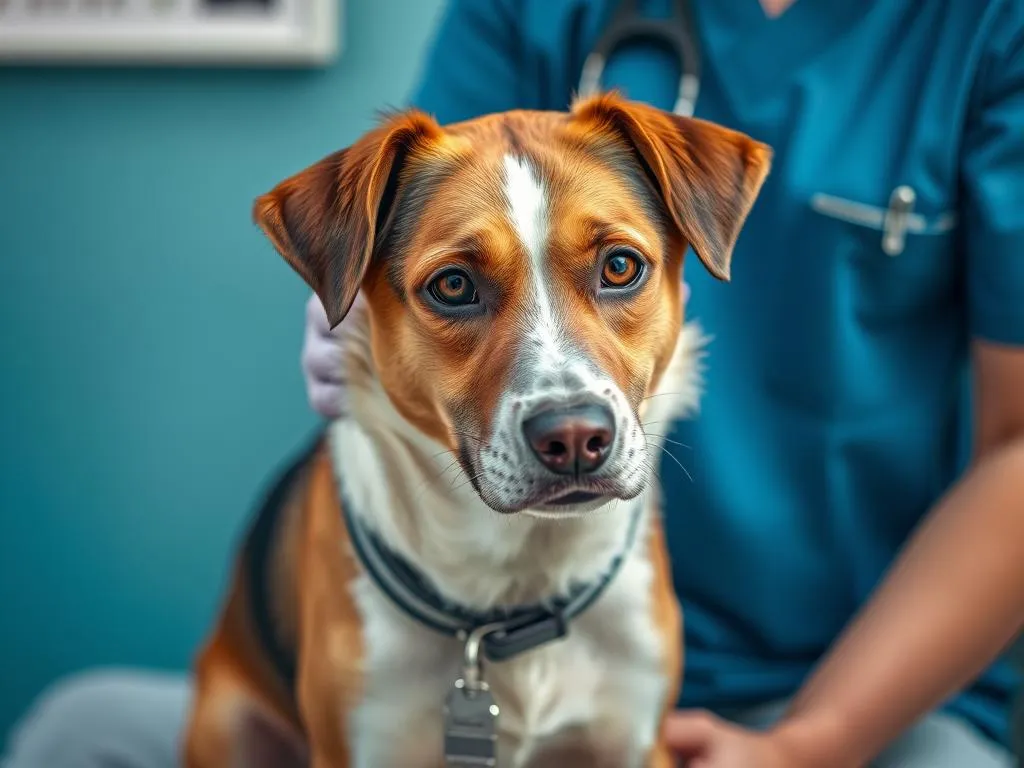
Introduction
Physical therapy for dogs is an increasingly popular approach in canine health care aimed at promoting recovery, enhancing mobility, and improving quality of life. This specialized field involves various techniques and exercises designed to address specific health issues that dogs may face throughout their lives.
Providing proper health care for dogs goes beyond regular veterinary check-ups and vaccinations. It encompasses a holistic approach that includes physical therapy, particularly for aging dogs or those recovering from injuries. As pet owners become more aware of the benefits of comprehensive health care, the demand for physical therapy for dogs is on the rise.
This article will delve into the intricacies of canine physical therapy, exploring its goals, benefits, techniques, and when to consider it for your furry friend. By the end, you will have a comprehensive understanding of how physical therapy can play a crucial role in your dog’s health care.
Understanding Dog Physical Therapy
What is Physical Therapy for Dogs?
Physical therapy for dogs is a specialized form of treatment that focuses on restoring function, alleviating pain, and enhancing mobility through a combination of exercises, modalities, and manual techniques. While the principles are similar to human physical therapy, canine therapy is uniquely tailored to the anatomy and physiology of dogs.
Veterinary physical therapists assess each dog’s individual needs and create customized treatment plans. This ensures that the therapy addresses specific conditions, allowing for effective recovery and improved overall health.
Goals of Canine Physical Therapy
The primary goals of canine physical therapy include:
- Pain Management: Alleviating discomfort and enhancing the dog’s quality of life.
- Rehabilitation: Assisting in recovery after surgery or injury to regain strength and mobility.
- Enhanced Mobility: Improving flexibility and movement to support an active lifestyle.
Types of Conditions Treated
Physical therapy for dogs can address a variety of conditions, including:
- Musculoskeletal Issues: Such as arthritis and hip dysplasia, which can significantly impact mobility.
- Neurological Conditions: Including paralysis and recovery from strokes, requiring specialized rehabilitation.
- Post-Surgical Recovery: Helping dogs recuperate from orthopedic surgeries and regain their pre-surgery fitness levels.
The Benefits of Physical Therapy for Dogs
Pain Relief
One of the most significant advantages of physical therapy for dogs is its role in pain relief. Various techniques such as massage, heat therapy, and stretching are employed to alleviate discomfort. These methods help to improve circulation, reduce muscle tension, and promote relaxation, ultimately leading to a more comfortable life for the dog.
Improved Mobility
Physical therapy enhances a dog’s movement and flexibility, making it particularly beneficial for both active and aging dogs. Through targeted exercises, physical therapists can help dogs regain their lost range of motion and improve their overall physical capabilities, allowing them to enjoy daily activities without discomfort.
Increased Strength and Endurance
Building muscle strength is crucial for dogs, especially for working dogs and athletes. Physical therapy for dogs includes specific exercises designed to target and strengthen different muscle groups. This leads to improved endurance, allowing dogs to perform their tasks more efficiently and with greater stamina.
Enhanced Quality of Life
The emotional and psychological benefits of physical therapy cannot be overlooked. Many dog owners report significant improvements in their pets’ overall well-being following therapy. Dogs that once struggled with mobility can engage more with their environment, leading to increased happiness and a better quality of life.
Common Techniques in Canine Physical Therapy
Manual Therapy
Manual therapy includes various massage and manipulation techniques aimed at relieving pain, improving circulation, and increasing joint flexibility. This hands-on approach is crucial for addressing specific musculoskeletal issues and for fostering a bond between the therapist and the dog.
Exercise Therapy
Exercise therapy involves structured physical activities tailored to the dog’s needs. Equipment such as treadmills, balance balls, and obstacle courses are often utilized to create a fun and effective exercise regimen. The goal is to improve strength, mobility, and overall fitness.
Hydrotherapy
Hydrotherapy, or water therapy, offers numerous benefits for dogs, especially those with joint issues or recovering from surgery. The buoyancy of water reduces stress on the joints while allowing for safe movement. Techniques may include underwater treadmills, swimming sessions, or simple water exercises that enhance strength and mobility.
Laser Therapy
Laser therapy employs focused light energy to stimulate healing and reduce inflammation. This non-invasive technique can be particularly effective for conditions such as arthritis, tendon injuries, and post-surgical recovery. It promotes tissue repair and pain relief without the need for medication.
Electrotherapy
Electrotherapy uses electrical stimulation to manage pain and promote muscle recovery. This technique can be especially beneficial for dogs suffering from chronic pain or those undergoing rehabilitation after surgery. It helps improve circulation and muscle function, aiding the recovery process.
When to Consider Physical Therapy for Your Dog
Signs Your Dog May Need Physical Therapy
As a responsible pet owner, being attentive to your dog’s behavior and mobility is essential. Signs that your dog may benefit from physical therapy for dogs include:
- Changes in walking or running patterns.
- Difficulty getting up or lying down.
- Limping or favoring one leg.
- Reluctance to engage in play or exercise.
- Signs of pain such as whimpering, growling, or excessive licking of a specific area.
Consulting with Your Veterinarian
Before initiating any physical therapy, it is crucial to consult with your veterinarian. They can conduct a thorough examination to assess your dog’s condition and recommend appropriate treatment options. Discussing the possibility of physical therapy with your vet ensures a comprehensive approach to your dog’s health care.
Choosing the Right Physical Therapist
Selecting a qualified physical therapist is vital for your dog’s recovery. Look for credentials such as certification from recognized veterinary rehabilitation organizations. Key questions to ask potential therapists include:
- What is your experience with my dog’s specific condition?
- What techniques do you use, and how do they benefit my dog?
- Can you provide references or success stories from other clients?
What to Expect During Physical Therapy Sessions
Initial Evaluation
During the first visit, your dog will undergo a thorough evaluation to assess their condition, mobility, and pain levels. The therapist will discuss your dog’s medical history and develop a tailored treatment plan based on the evaluation results. This personalized approach is key to effective recovery.
Types of Sessions Available
Physical therapy sessions may vary in structure. Some dogs may benefit from one-on-one sessions, while others may thrive in group settings. The duration of each session typically ranges from 30 minutes to an hour, depending on the treatment goals and your dog’s stamina.
Home Exercise Programs
The role of owners in their dog’s recovery is crucial. Many therapists will provide at-home exercise programs to complement in-clinic treatments. Simple exercises such as gentle stretching, leash walks, or balance exercises can be easily incorporated into your dog’s daily routine, promoting ongoing progress.
Cost and Accessibility of Dog Physical Therapy
Typical Costs Involved
The costs associated with physical therapy for dogs can vary widely based on location, the therapist’s experience, and the specific treatment plan. Generally, you can expect:
- Initial Assessment: $100 – $200
- Individual Sessions: $50 – $150 each
- Equipment Costs: Additional costs may arise if specialized equipment is needed for home exercises.
Insurance Considerations
Pet insurance can play a significant role in offsetting the costs of physical therapy. While coverage varies, many policies now include provisions for rehabilitation services. It’s advisable to review your policy or consult with your insurance provider to understand what treatments are covered and how to file claims.
Finding Local Resources
Locating a certified physical therapist for dogs can be done through local veterinary clinics, animal hospitals, or dedicated rehabilitation centers. Online directories and professional organizations can also provide lists of qualified practitioners in your area.
Case Studies and Success Stories
Recovery Stories
Many dogs have experienced remarkable recoveries through physical therapy for dogs. For instance, a Labrador Retriever named Max, who underwent knee surgery, regained full mobility and strength after a series of tailored physical therapy sessions. His owners reported significant improvements in his energy levels and overall happiness post-rehabilitation.
Owner Testimonials
Dog owners consistently share positive experiences regarding their pets’ progress through physical therapy. One owner noted how her aging Dachshund, Lucy, who struggled with mobility issues, regained the ability to climb stairs and play fetch again after undergoing a structured therapy program. These success stories highlight the transformative impact of physical therapy on canine health.
Conclusion
In summary, physical therapy for dogs is an invaluable component of modern dog health care. From pain management to enhanced mobility and improved quality of life, the benefits are profound and wide-ranging. As the field of canine rehabilitation continues to grow, more dog owners are recognizing its importance in their pets’ health care routines.
If you suspect that your dog could benefit from physical therapy, don’t hesitate to discuss it with your veterinarian. Your dog deserves the best care possible, and physical therapy might be the key to a happier, healthier life.









